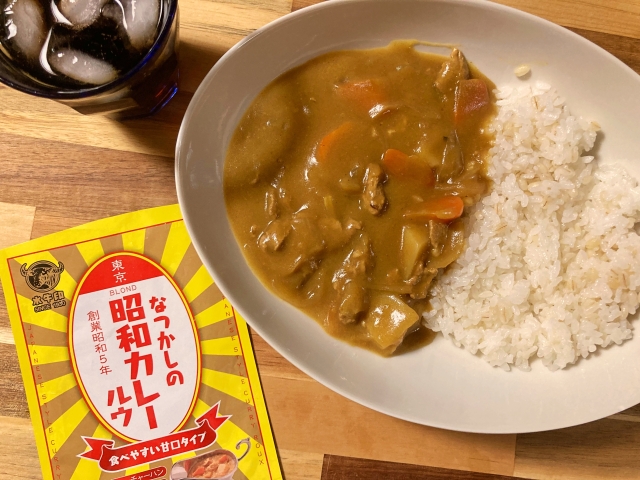
Our Japanese-language reporter had no idea what to expect.
No matter what era you grew up in, there are always going to be times you look back on your youth fondly, and for some of us, the best memories center around food. And while we can’t go back in time to relive those memories, we can bring them to life by recreating those foods and their nostalgic flavors.
That’s why our Japanese-language reporter Aoi Kuroneko was excited to find a “Natsukashi no Showa Curry Roux” (“Nostalgic Curry Roux”), which recreates the flavor of curry from the Showa era (1926 to 1989). Though Aoi, who was born in 1985, isn’t quite old enough to have seen much of the Showa era, she found this product intriguing. What did Showa-era curry taste like? Is it different from curry today? Aoi couldn’t wait to find out.
But first, did you know that curry powder first arrived in Japan in the Meiji period? There’s actually Meiji-era roux that you can try out. Curry was introduced to Japan in 1905, so perhaps by the time the Showa period rolled around, it was already close to the version of curry that we know and love today. Just in case, Aoi checked the instructions on the back of the package to make sure she had everything she needed.
The recommended ingredients were meat of your choice, onions, carrots, potatoes, and of course the Showa Curry Roux. Hm…so exactly the same as curry today. The only difference was probably that the Showa curry roux was in powder form and not the blocks that many Japanese curry roux come in.
Even though it seemed like she’d be making curry like always, Aoi made sure to follow the instructions on the back of the package. The first step was to cut the ingredients into whatever size she preferred.
Then she fried up the vegetables and meat…
And poured in water, brought it to a boil, and simmered it until cooked. Then she turned off the heat and added the roux before turning the heat back on to low.
In short, the preparation steps were exactly the same as present-day curry, which was kind of a let-down. Aoi had expected something slightly more…Showa about it. Perhaps if she had one of these metal servers to put the finished product in?
Well, perhaps the Showa-ness would come out in the flavor. The finished curry did have a slightly yellower tint to it than most present-day Japanese curries. Ready to find out if it tasted any different, Aoi took her first bite…
It was very similar to a ready-made curry for kids since its spices were very faint. It wasn’t spicy at all, which made it kind of mysterious. With most curries today, the flavor and fragrance stick with you for a little bit after eating it, especially on your breath. But there was none of that with this curry. It had a very clean aftertaste, and Aoi guessed that she would be able to have a meeting with an important business client five minutes after eating a bowl of Showa curry without worrying about her breath.
While a lot of the “best curries” these days have complex spice mixes, hidden flavors, or luxury ingredients in them and are meant to stimulate all five senses, this curry is, by contrast, completely unremarkable, but in absolutely the best way possible. It’s a curry that doesn’t assert itself too strongly, which is actually a nice change, especially if you want something a little lighter on the palate. Aoi could confidently say that she’d never eaten a curry like that before; it was a very interesting experience.
The other thing that pleasantly surprised her about this curry was that, despite it being a powder, it didn’t form into clumps or have any trouble dissolving. It was very quickly and smoothly incorporated into the water. Also, the package was super easy to open, which is always a benefit. The ease of making this curry makes it fit surprisingly well into the busy lives of the people of Reiwa. Perhaps Showa Curry is as timeless as curry itself.
Images © SoraNews
● Want to hear about SoraNews24’s latest articles as soon as they’re published? Follow us on Facebook and Twitter!
[ Read in Japanese ]

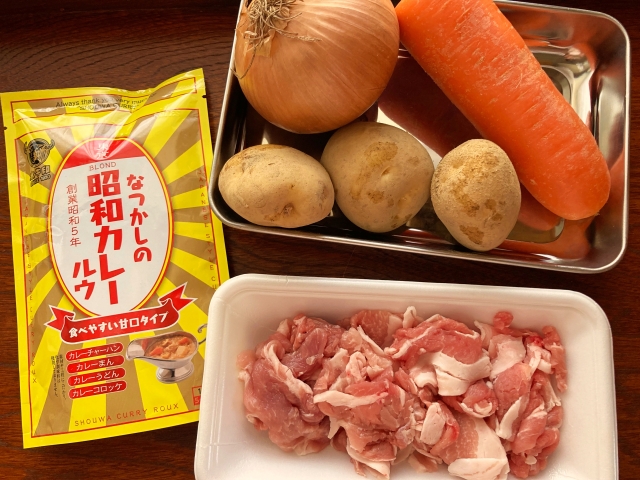
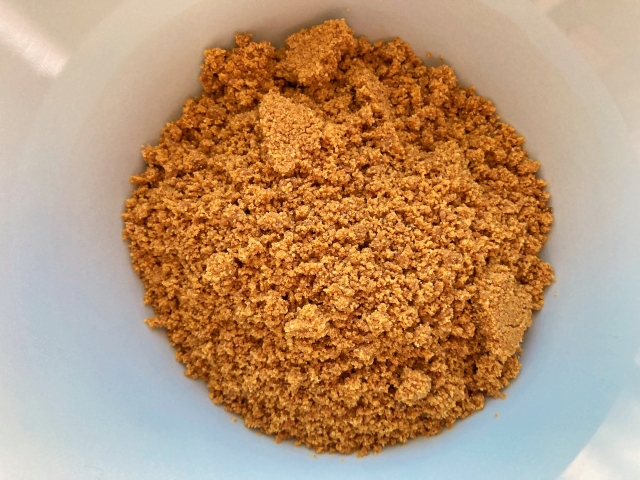
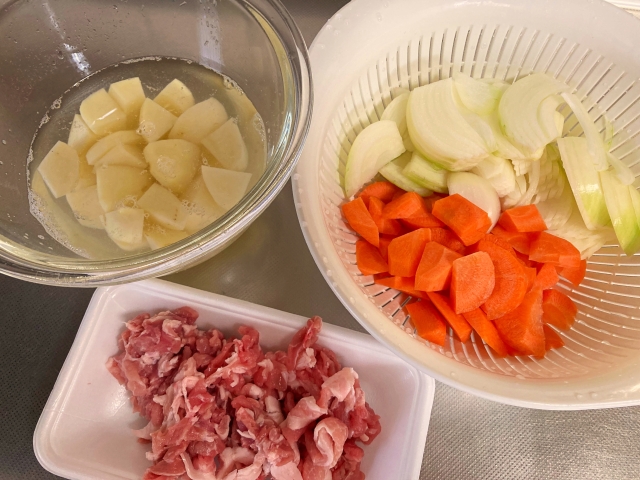
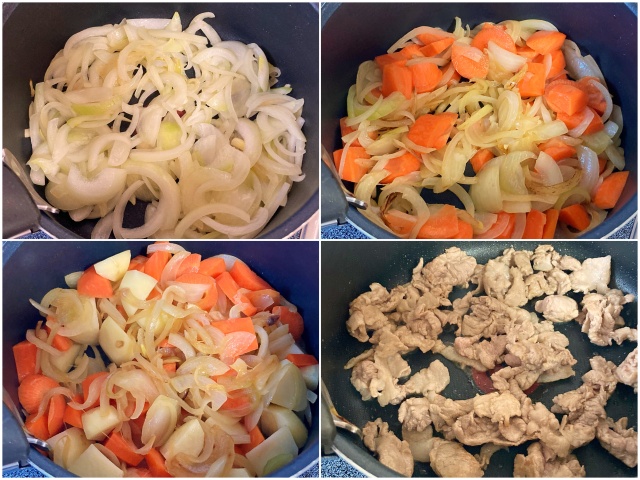
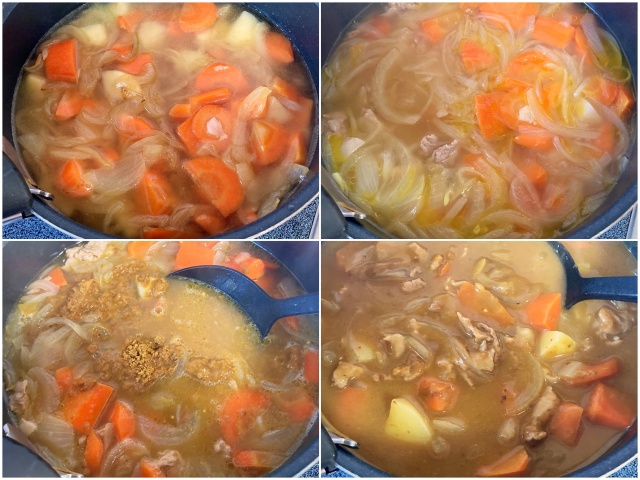
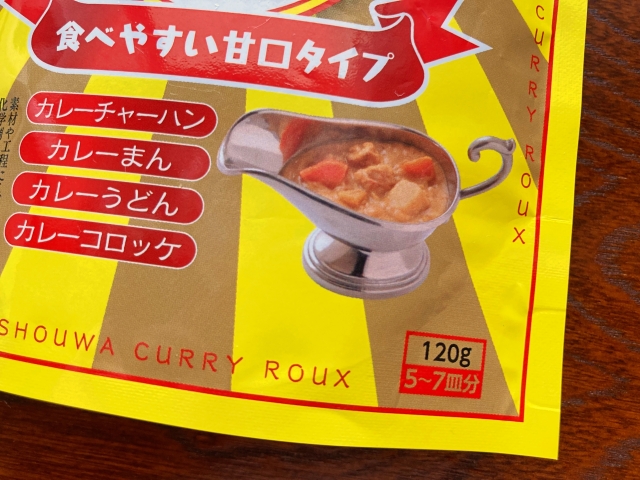
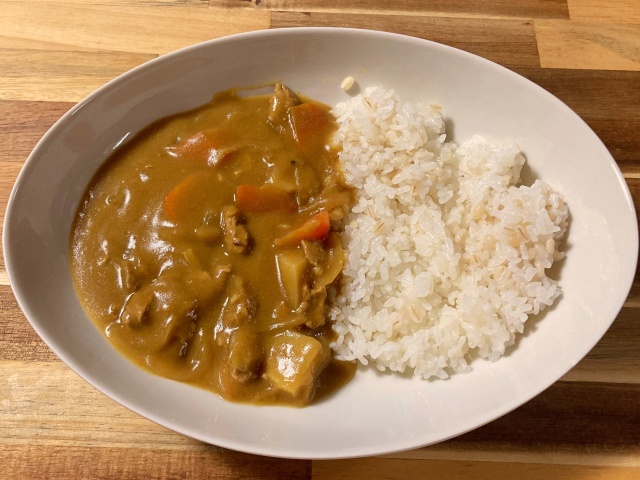
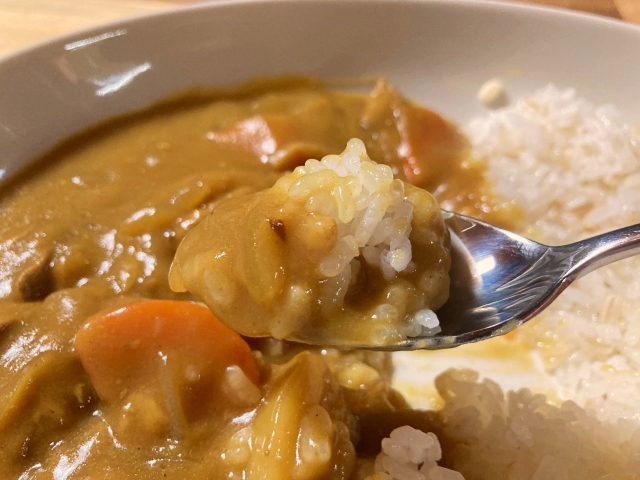
 We spice up our fermented soybeans with curry powder flavored natto【Taste Test】
We spice up our fermented soybeans with curry powder flavored natto【Taste Test】 Taste testing 7-Eleven Japan’s five frozen curries to see which ones nail it
Taste testing 7-Eleven Japan’s five frozen curries to see which ones nail it The best Japanese curry in Japan isn’t eaten at a restaurant
The best Japanese curry in Japan isn’t eaten at a restaurant English-language Reddit falls in love with curry restaurant– Can it win our taste tester’s heart?
English-language Reddit falls in love with curry restaurant– Can it win our taste tester’s heart? Godiva curry bread from a convenience store? Only in Japan…but should it exist at all?
Godiva curry bread from a convenience store? Only in Japan…but should it exist at all? McDonald’s new Happy Meals offer up cute and practical Sanrio lifestyle goods
McDonald’s new Happy Meals offer up cute and practical Sanrio lifestyle goods All-you-can-drink Starbucks and amazing views part of Tokyo’s new 170 meter-high sky lounge
All-you-can-drink Starbucks and amazing views part of Tokyo’s new 170 meter-high sky lounge More foreign tourists than ever before in history visited Japan last month
More foreign tourists than ever before in history visited Japan last month Starbucks reopens at Shibuya Scramble Crossing with new look and design concept
Starbucks reopens at Shibuya Scramble Crossing with new look and design concept Beautiful Sailor Moon manhole cover coasters being given out for free by Tokyo tourist center
Beautiful Sailor Moon manhole cover coasters being given out for free by Tokyo tourist center The oldest tunnel in Japan is believed to be haunted, and strange things happen when we go there
The oldest tunnel in Japan is believed to be haunted, and strange things happen when we go there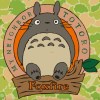 Flying Totoro appears in new Studio Ghibli x Foxfire collection
Flying Totoro appears in new Studio Ghibli x Foxfire collection Disney princesses get official manga makeovers for Manga Princess Cafe opening in Tokyo
Disney princesses get official manga makeovers for Manga Princess Cafe opening in Tokyo Is the new Shinkansen Train Desk ticket worth it?
Is the new Shinkansen Train Desk ticket worth it? Arrest proves a common Japanese saying about apologies and police
Arrest proves a common Japanese saying about apologies and police We try out “Chan Ramen”, an underground type of ramen popular in the ramen community
We try out “Chan Ramen”, an underground type of ramen popular in the ramen community Beautiful new Final Fantasy T-shirt collection on the way from Uniqlo【Photos】
Beautiful new Final Fantasy T-shirt collection on the way from Uniqlo【Photos】 Foreign English teachers in Japan pick their favorite Japanese-language phrases【Survey】
Foreign English teachers in Japan pick their favorite Japanese-language phrases【Survey】 There’s a park inside Japan where you can also see Japan inside the park
There’s a park inside Japan where you can also see Japan inside the park Japanese convenience store packs a whole bento into an onigiri rice ball
Japanese convenience store packs a whole bento into an onigiri rice ball Studio Ghibli releases Kiki’s Delivery Service chocolate cake pouches in Japan
Studio Ghibli releases Kiki’s Delivery Service chocolate cake pouches in Japan Japan’s bone-breaking and record-breaking roller coaster is permanently shutting down
Japan’s bone-breaking and record-breaking roller coaster is permanently shutting down New definition of “Japanese whiskey” goes into effect to prevent fakes from fooling overseas buyers
New definition of “Japanese whiskey” goes into effect to prevent fakes from fooling overseas buyers Foreign passenger shoves conductor on one of the last full runs for Japan’s Thunderbird train
Foreign passenger shoves conductor on one of the last full runs for Japan’s Thunderbird train Our Japanese reporter visits Costco in the U.S., finds super American and very Japanese things
Our Japanese reporter visits Costco in the U.S., finds super American and very Japanese things Kyoto bans tourists from geisha alleys in Gion, with fines for those who don’t follow rules
Kyoto bans tourists from geisha alleys in Gion, with fines for those who don’t follow rules Studio Ghibli unveils Mother’s Day gift set that captures the love in My Neighbour Totoro
Studio Ghibli unveils Mother’s Day gift set that captures the love in My Neighbour Totoro Domino’s Japan now sells…pizza ears?
Domino’s Japan now sells…pizza ears? New Japanese KitKat flavour stars Sanrio characters, including Hello Kitty
New Japanese KitKat flavour stars Sanrio characters, including Hello Kitty Sales of Japan’s most convenient train ticket/shopping payment cards suspended indefinitely
Sales of Japan’s most convenient train ticket/shopping payment cards suspended indefinitely Sold-out Studio Ghibli desktop humidifiers are back so Totoro can help you through the dry season
Sold-out Studio Ghibli desktop humidifiers are back so Totoro can help you through the dry season Japanese government to make first change to romanization spelling rules since the 1950s
Japanese government to make first change to romanization spelling rules since the 1950s Ghibli founders Toshio Suzuki and Hayao Miyazaki contribute to Japanese whisky Totoro label design
Ghibli founders Toshio Suzuki and Hayao Miyazaki contribute to Japanese whisky Totoro label design Doraemon found buried at sea as scene from 1993 anime becomes real life【Photos】
Doraemon found buried at sea as scene from 1993 anime becomes real life【Photos】 Tokyo’s most famous Starbucks is closed
Tokyo’s most famous Starbucks is closed One Piece characters’ nationalities revealed, but fans have mixed opinions
One Piece characters’ nationalities revealed, but fans have mixed opinions We asked a Uniqlo employee what four things we should buy and their suggestions didn’t disappoint
We asked a Uniqlo employee what four things we should buy and their suggestions didn’t disappoint Princesses, fruits, and blacksmiths: Study reveals the 30 most unusual family names in Japan
Princesses, fruits, and blacksmiths: Study reveals the 30 most unusual family names in Japan Studio Ghibli’s new desktop Howl’s Moving Castle will take your stationery on an adventure
Studio Ghibli’s new desktop Howl’s Moving Castle will take your stationery on an adventure Japanese mom’s ugly curry rice has a beautiful backstory【Photos】
Japanese mom’s ugly curry rice has a beautiful backstory【Photos】 Convenience Store Private Brand Showdown: Which of Japan’s Big Three has the best beef curry?
Convenience Store Private Brand Showdown: Which of Japan’s Big Three has the best beef curry? Is Muji’s most expensive instant curry worth its price?【Taste test】
Is Muji’s most expensive instant curry worth its price?【Taste test】 Three unusual Japanese curries to celebrate Regional Retort Curry Day
Three unusual Japanese curries to celebrate Regional Retort Curry Day No time to cook? No problem! Three easy ways to improve instant curry
No time to cook? No problem! Three easy ways to improve instant curry Kintetsu Curry boasts “ordinary deliciousness” but can it really deliver an average taste?
Kintetsu Curry boasts “ordinary deliciousness” but can it really deliver an average taste? 103-year-old Japanese curry rice restaurant got dish right a century ago, still serves it today
103-year-old Japanese curry rice restaurant got dish right a century ago, still serves it today Soup curry and onigiri for breakfast at a super tasty semi-secret spot in Tokyo’s Shinjuku
Soup curry and onigiri for breakfast at a super tasty semi-secret spot in Tokyo’s Shinjuku Curry Bread Cider: A drink with an unforgettable aftertaste【Taste Test】
Curry Bread Cider: A drink with an unforgettable aftertaste【Taste Test】 Curry-nai! Legendary X Japan story births new line of instant curry
Curry-nai! Legendary X Japan story births new line of instant curry Japan’s biggest curry chain now offers a true vegetarian curry
Japan’s biggest curry chain now offers a true vegetarian curry Japan’s Gyoza Filling Curry — Combination of two great foods reminds us of another great food
Japan’s Gyoza Filling Curry — Combination of two great foods reminds us of another great food The U.K. thinks Japanese curry is katsu curry, and people aren’t happy about it
The U.K. thinks Japanese curry is katsu curry, and people aren’t happy about it We bought a Rilakkuma custard pudding cake and found out what a carefree bear tastes like
We bought a Rilakkuma custard pudding cake and found out what a carefree bear tastes like We eat an Italian-inspired lobster curry…at a cheap curry chain!
We eat an Italian-inspired lobster curry…at a cheap curry chain!
Leave a Reply